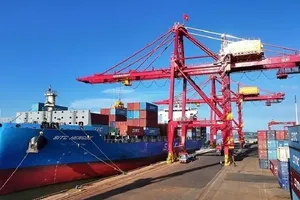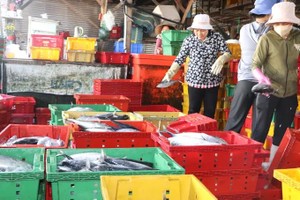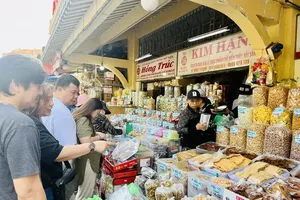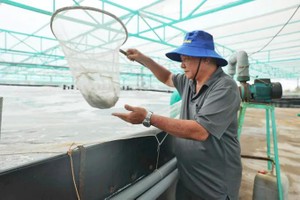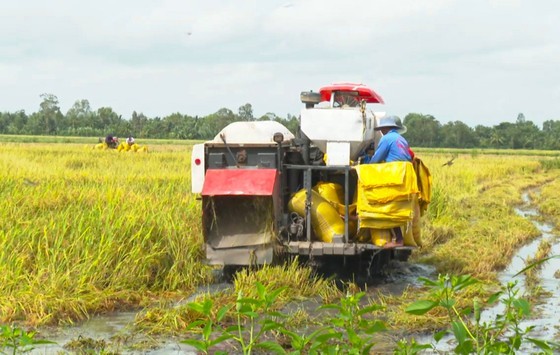 |
Farmers in the Mekong Delta harvest rice |
Participants at today’s conference on the implementation of rice export management in the last months of 2023 in the Mekong Delta City of Can Tho assessed that the rice output will reach over 43 million tons on the sowing area of 7.1 million hectares. According to the Ministry, Vietnam can export at least reach 7.5 million tons in 2023.
According to customs statistics, in the first 6 months of 2023, rice export turnover reached 4.24 million tons of rice with a value of US$2.26 billion, up 21.3 percent in volume and 32.3 percent in turnover over the same period in 2022. The average export price reached $533 per ton, up 9 percent compared to the average level in the same period last year.
It is estimated that by the end of July 2023, Vietnam exported 4.83 million tons of rice bringing $2.58 billion to the country, up 18.7 percent in volume and 29.6 percent in value over the same period in 2022. The average export price is estimated at $534 per ton, up 9.2 percent against the same period in 2022.
At the conference, leaders of the Ministry of Industry and Trade, the Ministry of Agriculture and Rural Development, the Vietnam Food Association and rice export traders re-evaluated the recent export situation and discussed export management in the last months of 2023.
According to the Ministry of Agriculture and Rural Development, it is expected that in 2023, the whole country will sow 7.1 million hectares of all kinds of rice, with an average productivity of 6.07 tons per ha. It is expected that the country will yield over 43.1 million tons, an increase of 452,000 tons compared to 2022. Localities in the Mekong Delta are speeding up the progress of sowing autumn-winter crops with an area expected to increase by 50,000 ha compared to the same period last year, reaching 700,000 ha.
After India banned rice exports to curb domestic inflation, the domestic and export prices of Vietnam's rice continuously increased. The Ministry of Industry and Trade assessed that when India - the world’s largest rice exporter – issued a decision to ban exports of the rice variety accounting for more than 80 percent of global shipments, it has had a strong impact on global rice trade in particular and food in general affecting 140 countries.
Because the supply chain during the post-Covid-19 impacts has not shown any signs of recovery, some countries had no choice but they were forced to come up with immediate solutions to curb inflation as inflation tends to climb and the world food supply is being affected.
Minister of Industry and Trade Nguyen Hong Dien said that two weeks after India banned rice exports on July 20, the price of Vietnam's 5 percent broken rice has increased by more than $60 per ton or it surged from $535 to $602 per ton and jasmine rice price also increased from $625 to over $690 per ton.
According to Mr. Tran Duy Dong, Director of the Import-Export Department under the Ministry of Industry and Trade, from now until the end of 2023, if the weather is good, rice production will ensure the plan to fully meet the domestic demand for rice and for exports. It is estimated that in the first 7 months of 2023, export rice output reached about 4.83-4.84 million tons. Therefore, the Southeast Asian country can sell additional 2.66-2.67 million tons to foreign countries.
Some businesses said that the amount of rice left from now to the end of the year may be more than the Ministry’s calculation because the Ministry has forgotten the amount of rice imported from Cambodia.
